But what exactly is a Honeycomb Blind?
Honeycomb Blinds are made with two or more layers of bonded fabric to create the unique hexagonal shape “honeycomb shape” and that’s where the name came from.
You may have heard about it, kwon as cellular blinds or according blinds or even pleated blinds.
Besides the unique shape Honeycomb Blinds are exceptional in providing light control and energy efficiency and its known to be the most effective window covering when it comes to insulation.
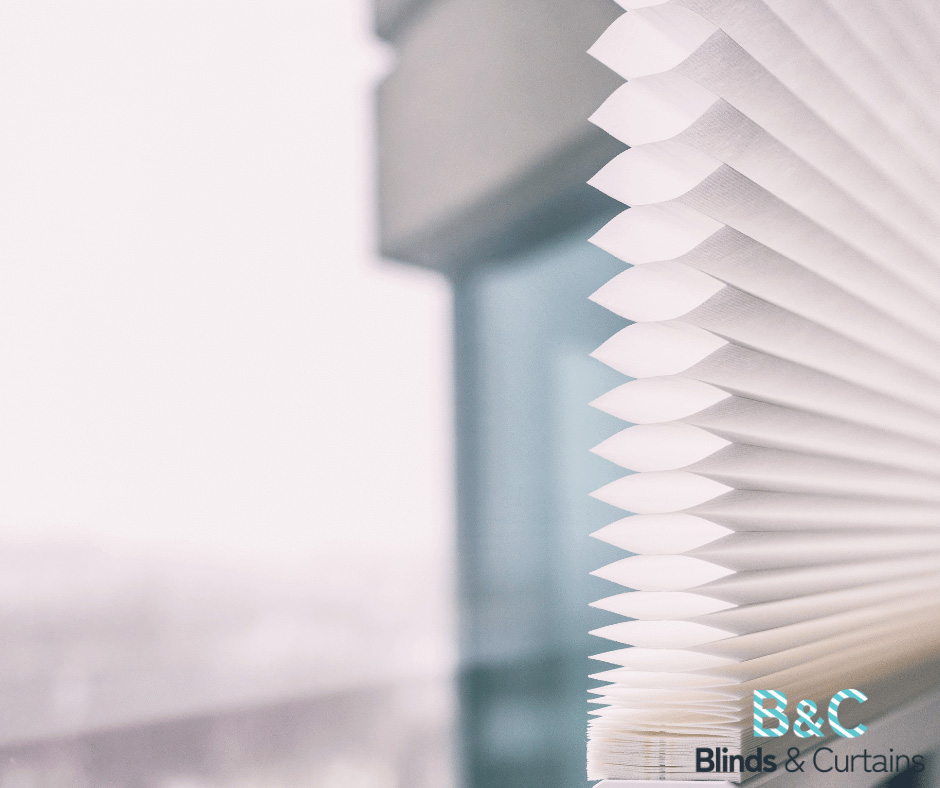
What are the top 5 benefits of honeycomb blinds?
- Energy Efficiency: Honeycomb blinds are designed with a unique cellular structure that traps air within the cells, creating an insulating barrier between the window and the room. This helps to keep your home warmer in the winter and cooler in the summer, reducing energy consumption and lowering utility bills.
- Light Control and Privacy: These blinds are available in various opacity levels, from sheer to blackout, allowing you to control the amount of light entering the room while maintaining privacy. The different options let you tailor the light filtration to your specific needs.
- Sound Absorption: The cellular design of honeycomb blinds also provides excellent sound absorption. The air pockets in the cells help to reduce outside noise, creating a quieter and more peaceful environment inside your home.
- Versatility: Honeycomb blinds come in a wide range of colors, sizes, and styles, making them suitable for any room or décor. They can be customized to fit various window shapes, including arches and skylights, and are available in cordless and motorized options for added safety and convenience.
- UV Protection: Honeycomb blinds can help protect your furniture, flooring, and artwork from harmful UV rays. By filtering sunlight, they reduce the fading and damage caused by prolonged sun exposure, helping to preserve the beauty of your interiors.
What are the cell sizes available and types of fabric?
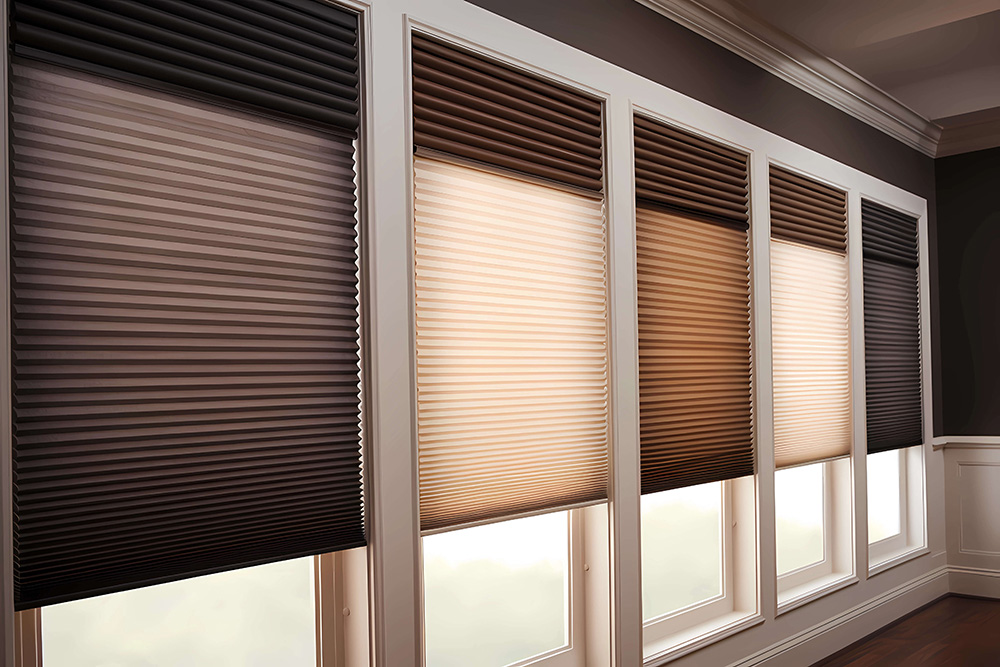
Blockout – The most popular choice for maximum insulation and complete light blockage, offering 100% opacity. Blockout Honeycomb blinds feature a special foil lining, ensuring that no light penetrates through the fabric.
Light Filter – This option not only provides insulation but also gently diffuses light, giving you a balanced combination of brightness and privacy. While Light Filter Honeycomb blinds don’t block light as effectively as the Blockout option, they’re an excellent choice if you want to maintain a bright atmosphere in the room while still enjoying energy efficiency.
Double Cell – Primarily available in light filter fabrics, the Double Cell design is an upgrade from the single-cell option. It offers enhanced insulation compared to single-cell honeycomb blinds, while still allowing natural light to filter through, making it a perfect blend of light control and energy efficiency.
What Are the Different Styles and Control Options?
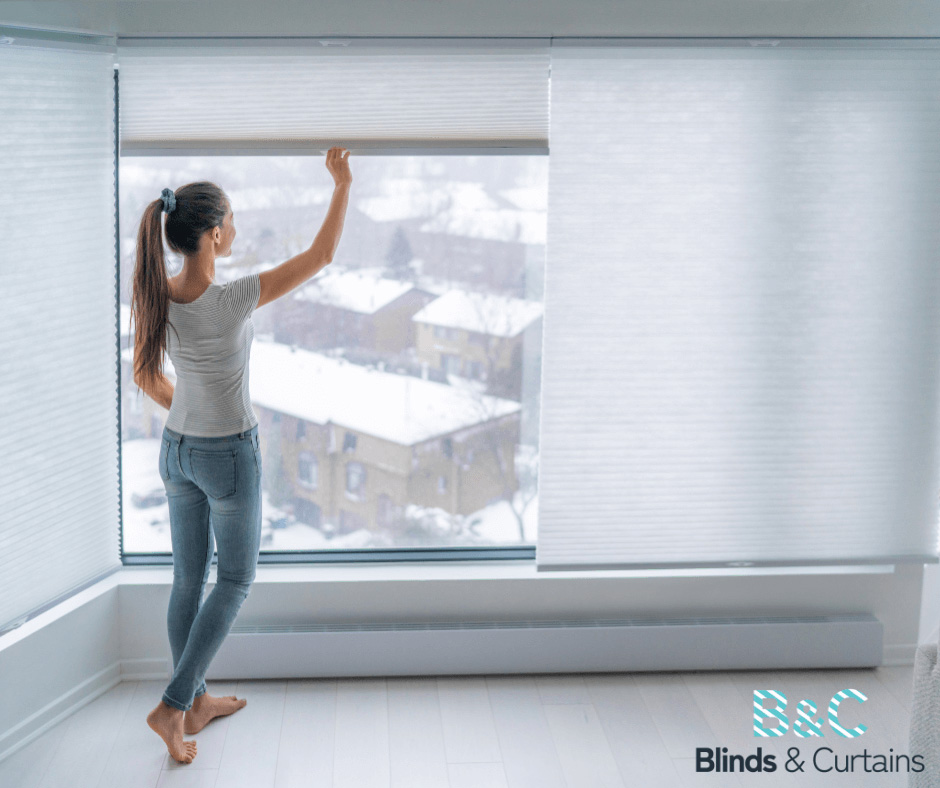
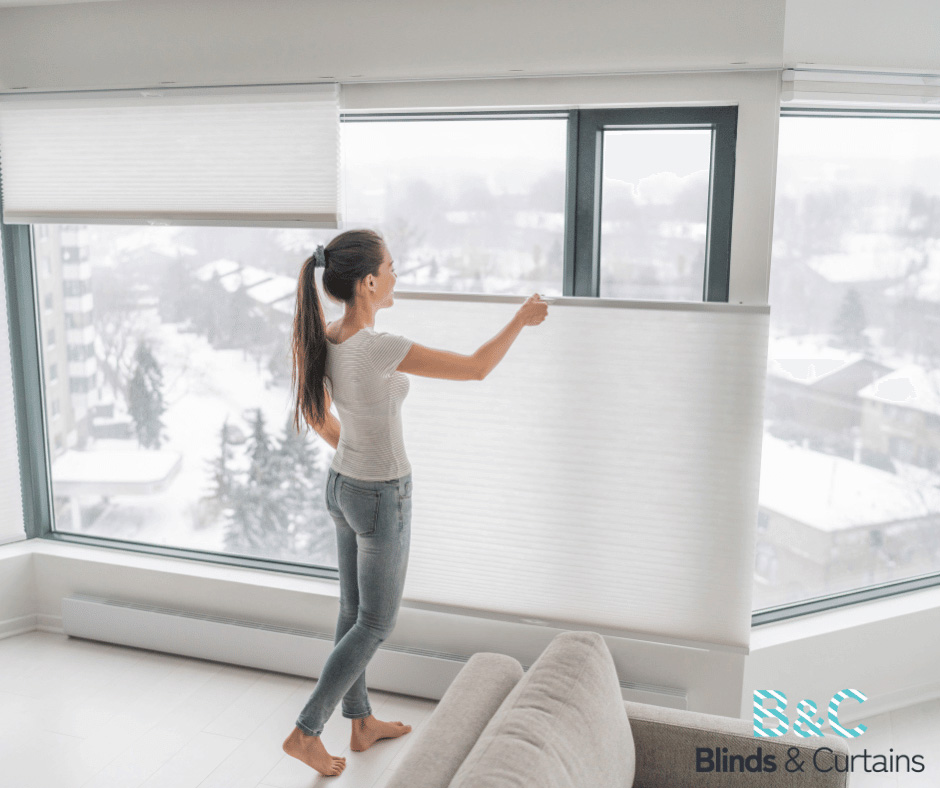
Cord Lock Single Cord – This is the most popular option, featuring a single cord that allows you to easily lift and lower the fabric panel, positioning it at any desired height.
Cord Clutch – Operates with a continuous loop system, allowing you to raise and lower the blind without excess cords hanging. It’s ideal for a cleaner, more streamlined look.
Top Down Bottom Up – This versatile system features two cords that allow you to adjust the honeycomb fabric panel from either the top or bottom. This offers a significant advantage over other systems, as you can position the panel exactly where you want for optimal light control and privacy.
Cordless – The cordless system eliminates the need for external cords, making operation simple by lifting or lowering the bottom rail. This is a great option for a sleek, child-safe design. However, for tall windows, a cord system may be more practical.
Night and Day System – This innovative option combines two types of fabric in one blind, operated by two cords. It’s perfect for those who want the maximum insulation benefits of blockout fabric along with the light-filtering properties of a sheer fabric. This dual functionality allows you to switch between complete privacy and soft, diffused light throughout the day.
Are honeycomb blinds suitable for any room?
Yes, honeycomb blinds are suitable for any room in your home. Their versatility, energy efficiency, and customizable options make them an excellent choice for various spaces:
- Living Rooms and Bedrooms: Honeycomb blinds provide excellent insulation, helping to maintain a comfortable temperature while also offering various levels of light control and privacy. You can choose from light-filtering options to create a soft, natural glow or blockout options for complete darkness, ideal for bedrooms.
- Kitchens and Bathrooms: Honeycomb blinds are available in moisture-resistant materials, making them a practical choice for kitchens and bathrooms. They can withstand humid conditions while providing privacy and light control.
- Home Offices and Study Rooms: The sound-absorbing properties of honeycomb blinds make them perfect for creating a quiet, focused environment. The insulation also helps regulate temperature, ensuring comfort during long hours of work.
- Children’s Rooms: Cordless honeycomb blinds are a safe and stylish option for children’s rooms. They offer the benefits of insulation, light control, and privacy while eliminating the hazards of dangling cords.
- Large Windows and Sliding Doors: Honeycomb blinds can be customized to fit a wide range of window sizes and shapes, including large windows and sliding glass doors. Their lightweight design makes them easy to operate, even in larger dimensions.
Are honeycomb blinds easy to clean?
- Regular Dusting: Use a feather duster, a soft cloth, or a vacuum cleaner with a brush attachment to remove dust from the surface of the blinds. Gently run the duster or brush along the pleats to keep the blinds looking fresh.
- Spot Cleaning: For minor stains or spots, use a damp cloth or sponge with mild soap and water. Gently blot the area, being careful not to crush the pleats. Avoid soaking the fabric, as excessive moisture can damage the material.
- Avoid Harsh Chemicals: Always avoid using harsh chemicals, bleach, or abrasive cleaners on honeycomb blinds, as these can damage the fabric and affect the colour.
- Professional Cleaning: For stubborn stains or deep cleaning, you can opt for professional cleaning services that specialize in blinds. They have the tools and expertise to clean your blinds without damaging them.
- Hair Dryer: Use a hair dryer in the cold setting to blow any excess dust trapped inside the honeycomb cell.
How Easy Is It to Measure Honeycomb Blinds?
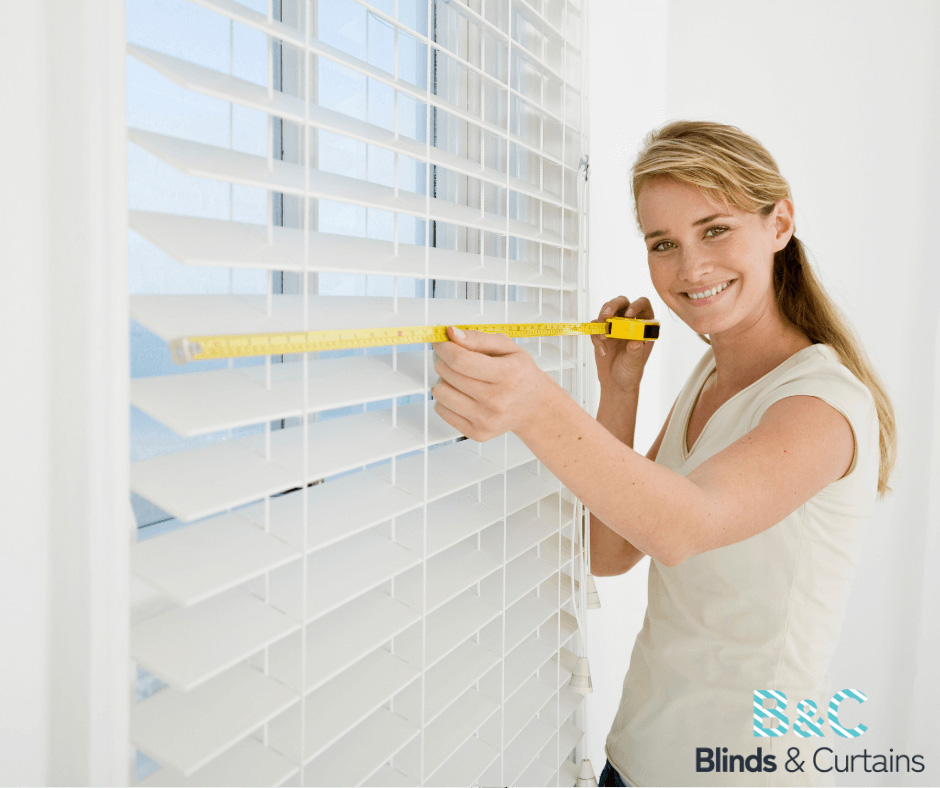
Measuring for honeycomb blinds is both simple and crucial for ensuring a perfect fit. By following this guide, you can be confident that your blinds will fit flawlessly when they arrive.
What You’ll Need:
- A Metal Tape Measure
Use a tape measure that reads in millimeters (mm), as all our measurements are provided in millimeters for precision.
- A Pencil or Pen
You’ll need this to mark your measurements.
Where to Install Your Blinds:
Before you start measuring, take a close look at the window or door where the blinds will be installed. The installation position is usually determined by the type of window, the placement of handles or latches, and the depth of the window frame. Here are your options:
Inside the Frame (Inside Fit)
This is where the blind fits neatly within your window frame.
Advantages:
- The blind stays within the window frame, so it doesn’t protrude into the room, creating a streamlined look.
- Being close to the glass, the blind offers better insulation.
Disadvantages:
- There may be small light gaps around the edges of the blind.
Outside the Frame (Face or Outside Fit)
In this option, the blind is mounted on the front of the window frame, often covering the architrave.
Advantages:
- The blind overlaps the window frame, minimizing the amount of light that seeps through the sides.
- It provides complete coverage of the window.
Disadvantages:
- The blind extends further into the room, which may be less visually appealing.